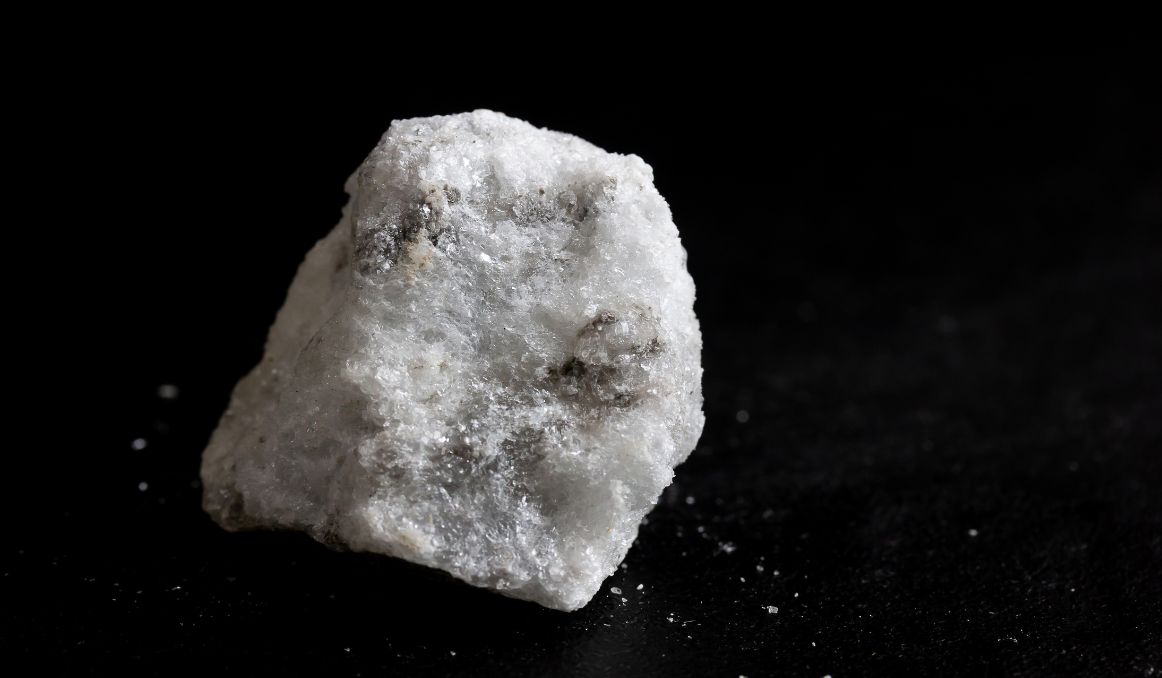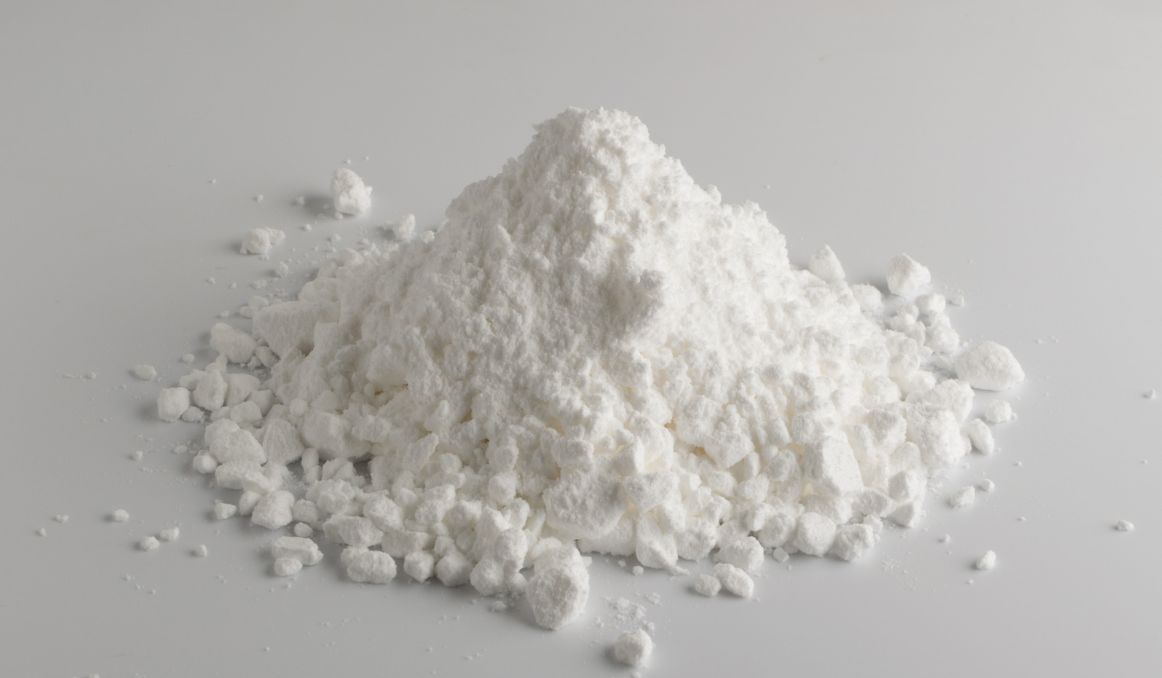When to Add Gypsum to Beer and Why
If you’re just hearing about the concept of putting gypsum in beer, you may be confused. You’re asking yourself when to add gypsum to beer and why someone would want to.
You’re not alone.
Or maybe you’ve never even heard of gypsum. Again, you’d be in good company.
Gypsum is not commonly used on human food and beverages, but it can be. Let’s talk about what it is, and why we would use it.
What Is Gypsum?

Gypsum is a naturally occurring, not toxic mineral known chemically as calcium sulfate dihydrate. It forms in certain types of sedimentary rocks when moisture evaporates in mineral rich marine soil. As time passes, that evaporation will produce more minerals that will eventually become a deposit. This deposit is gypsum.
Today, factories are also scrubbed, or cleaned, of their emissions for their mineral deposits, which can also produce gypsum.
The solid gypsum deposits in soil are highly beneficial as it is rich in plant available and soluble sulfur and calcium.
Soils rich in gypsum, particularly clay soils, are noticeably less prone to runoff and erosion. Gypsum in soil also helps prevent soil crusting; soil crusting prevents new seedlings from taking root and thriving.
Is Gypsum Safe for Humans?
Gypsum is considered safe for human consumption by the US Food and Drug Administration, and there is no reason to think it is otherwise when it is ingested via a food or beverage.
However, gypsum dust can irritate the throat and nasal passageways and cause headaches and dizziness. So be wary of inhaling too much gypsum in a closed, dry environment.
What Is Gypsum Used for?
Gypsum is used for a wide variety of things.
Industrially, it is used in drywall for interior walls, which is where the question of inhalation of gypsum dust arises. It is not used on exterior walls, however, as we noted above that gypsum absorbs water very well and will in fact cause a damp exterior that will eventually breakdown in exterior walls.
Gypsum is added to gardens and lawns for all the beneficial reasons listed above in terms of creating mineral rich soil.
Gypsum is added to land water often like lakes and ponds in order to settle particulates.
It can be added to foods and beverages as well as an additive of calcium.
Why Is Gypsum Used in Beer?
Gypsum is not traditionally used directly in beer but in the water that is used in beer.
This may happen when brewers note that the water is too soft for their beer, meaning that the water is likely high in sodium, which can affect the end result of their beer, including the pH, the “seasoning, which you taste on your palate,” and causing off flavors.
Many brewers will argue that the goal in brewing is to have water that is harder and higher in calcium. This depends, of course, on the type of beer you’re brewing but, in general, good water for brewing has low to moderate alkilinity, which means that it is lower in sodium.
So, in the end, brewers often want water that is both hard and moderately alkaline. In general, when you soften water, you raise the alkilinity, and when you harden water, you tend to lose alkilinity, making it too low.
Hardness is quantified as calcium and magnesium concentrate, and alkilinity is carbonate and bicarbonate concentration.
For good beer, the pH of your water is everything. The goal is to aim for alkilinity lower than 50 ppm as calcium carbonate.
So while some brewers are aiming to increase alkilinity, others are trying to decrease it.
It helps to have a test kit that will tell you the exact pH and chemical makeup of the water you are u
sing so you know if you should be adding gypsum to make your water harder and decrease the sodium or a softener because your water is too alkaline.
When to Add Gypsum to Beer

If you find the water you use in your brewery is too soft, or too alkaline, you can add food grade gypsum to the water.
Some brewers will even argue that if your hops are not “hoppy enough,” or if you are seeking a slightly more bittering effect in your beer, you can simply add some gypsum to achieve the desired effect.
Of course, other brewers, particularly naturalists or purists, will argue that if you want a more hoppy flavor in your beer, then you should simply add more hops.
How to Add Gypsum to Beer
If you do decide to add gypsum to your water or your beer, you can simply buy brewing gypsum and add 1 teaspoon of the powder per 5 gallons of water. With this ratio, you can expect to lower the pH of your water, but it is essential you check your water pH level first, so you don’t create more problems that you think you have.
It may simply be that you need to add more hops, check your grain ratios, or combine your ingredients in different ways.
It’s not always the water. In fact, it usually is not.
Experimentation and testing are key to resolving this issue, and of course it cannot hurt to have some gypsum on hand. You can always lay it down in your garden.
Cheers!
Passionate about the beer and/or wine making process? So are we! If you’re interested in finding out how you can use our technology to control fermentation and monitor your yeast, save work hours and improve the cost-efficiency of your business, drop us a line at [email protected] or check out our product pages:
- Oculyze BB 2.0 (Better Brewing) Yeast Cell Counter App + Hardware
- Oculyze FW (Fermentation Wine) Yeast Cell Counter App + Hardware
Also, you can now get access to a fully functional demo account to test your yeast via our Web App. Completely free of charge and with no commitment to purchase.
Sources:
- https://www.earthsciencegrowing.com/expert-advice/understanding-gypsum/
- https://gypsum.org/other-uses-of-gypsum/
- https://www.morebeer.com/products/gypsum-1-lb.html
- https://www.homebrewersassociation.org/forum/index.php?topic=14736.0
Stay on top on important fermentation insights – subscribe to our monthly newsletter and receive a hand-picked selection of our most relevant articles straight to your inbox.
Never miss a beat and get real time updates with a new article each workday by subscribing our social media channels.
Instagram | Facebook | Twitter | YouTube


